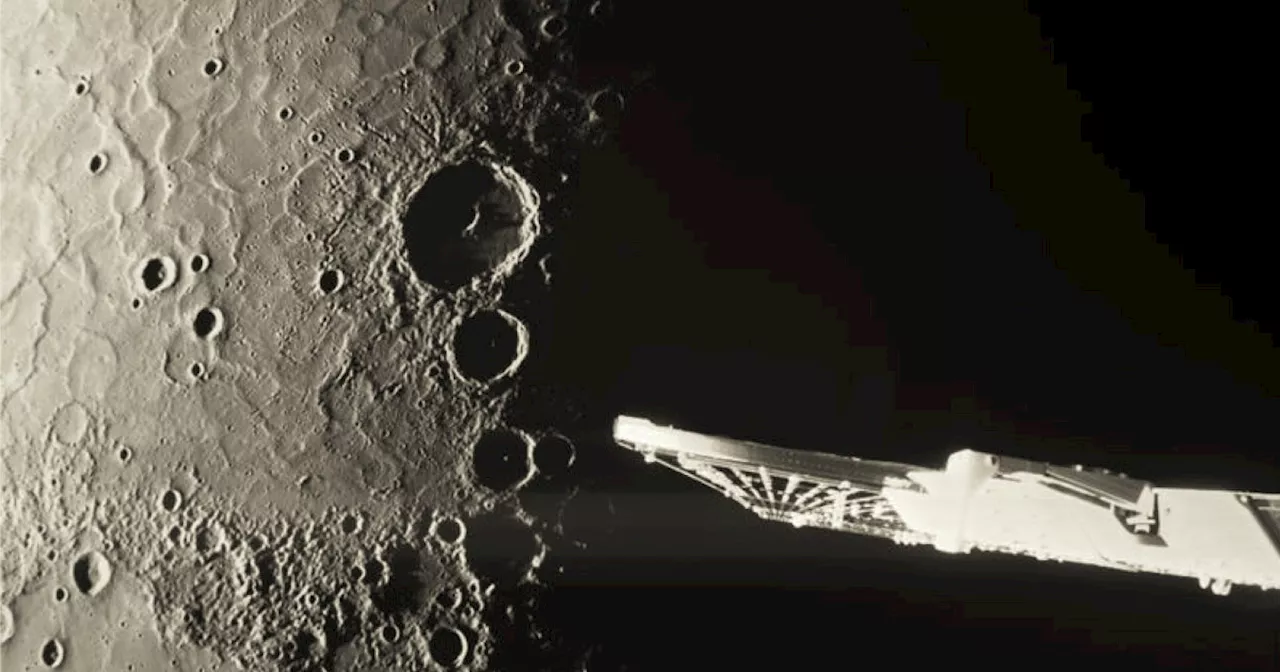The ESA's BepiColombo mission performed its sixth Mercury flyby on January 8, 2025, capturing stunning images of the planet's surface before its eventual split into separate orbiters. The spacecraft utilized Mercury's gravity to adjust its trajectory for orbital insertion in 2026. These images revealed a crater-laden landscape, including steep-walled craters at the north pole that may hold water ice.
The European Space Agency ( ESA )'s BepiColombo mission has achieved another milestone in its exploration of Mercury , the innermost planet in our solar system . On January 8, 2025, the spacecraft executed its sixth flyby of the sun-scorched world, utilizing Mercury 's gravitational pull to fine-tune its trajectory for its anticipated orbital insertion in 2026.
During this closest approach, BepiColombo skimmed a mere 180 miles above Mercury's surface, granting it an unprecedented opportunity to capture detailed images of the planet's enigmatic features.The spacecraft's journey during the flyby took it over Mercury's darkened night side, which perpetually faces away from the sun, before continuing to its north pole. Subsequently, it swung around to reveal Mercury's northern hemisphere bathed in sunlight. These captivating images were captured by BepiColombo's three monitoring cameras, designated M-CAM 1, 2, and 3. Although these cameras operate at a relatively modest resolution of 1024 x 1024 pixels in black-and-white, they provide invaluable scientific insights by showcasing a myriad of surface features on Mercury.However, this flyby marked the final close-up observation of Mercury by the monitoring cameras. The mission's design entails the eventual separation of the spacecraft into distinct components. In addition to the Mercury Transfer Module, responsible for guiding the mission to Mercury, there are two dedicated orbiters: the Mercury Planetary Orbiter and the Mercury Magnetospheric Orbiter. These orbiters will detach from the transfer module and embark on their individual journeys to study Mercury from orbit. Since the monitoring cameras are situated on the Mercury Transfer Module, they will not be able to capture any further images of Mercury as the mission progresses.The captured images reveal a landscape dominated by craters, showcasing the relentless bombardment that Mercury has endured over billions of years. Notable among these are the craters near the planet's north pole, which exhibit such steep slopes that their floors perpetually remain shrouded in darkness. These shadowy regions are prime candidates for harboring water ice, a key objective for the BepiColombo mission to investigate. Furthermore, the mission aims to unravel the composition of Mercury, shedding light on its formation and evolutionary history. By analyzing the planet's surface and magnetic field, scientists hope to gain a deeper understanding of this enigmatic world
Bepicolombo Mercury ESA Spacecraft Flyby Craters Water Ice Polar Shadows Solar System
United States Latest News, United States Headlines
Similar News:You can also read news stories similar to this one that we have collected from other news sources.
 BepiColombo Captures Stunning Images of Mercury's North PoleThe European-Japanese spacecraft BepiColombo has captured close-up photos of Mercury's north pole, revealing permanently shadowed craters and volcanic plains.
BepiColombo Captures Stunning Images of Mercury's North PoleThe European-Japanese spacecraft BepiColombo has captured close-up photos of Mercury's north pole, revealing permanently shadowed craters and volcanic plains.
Read more »
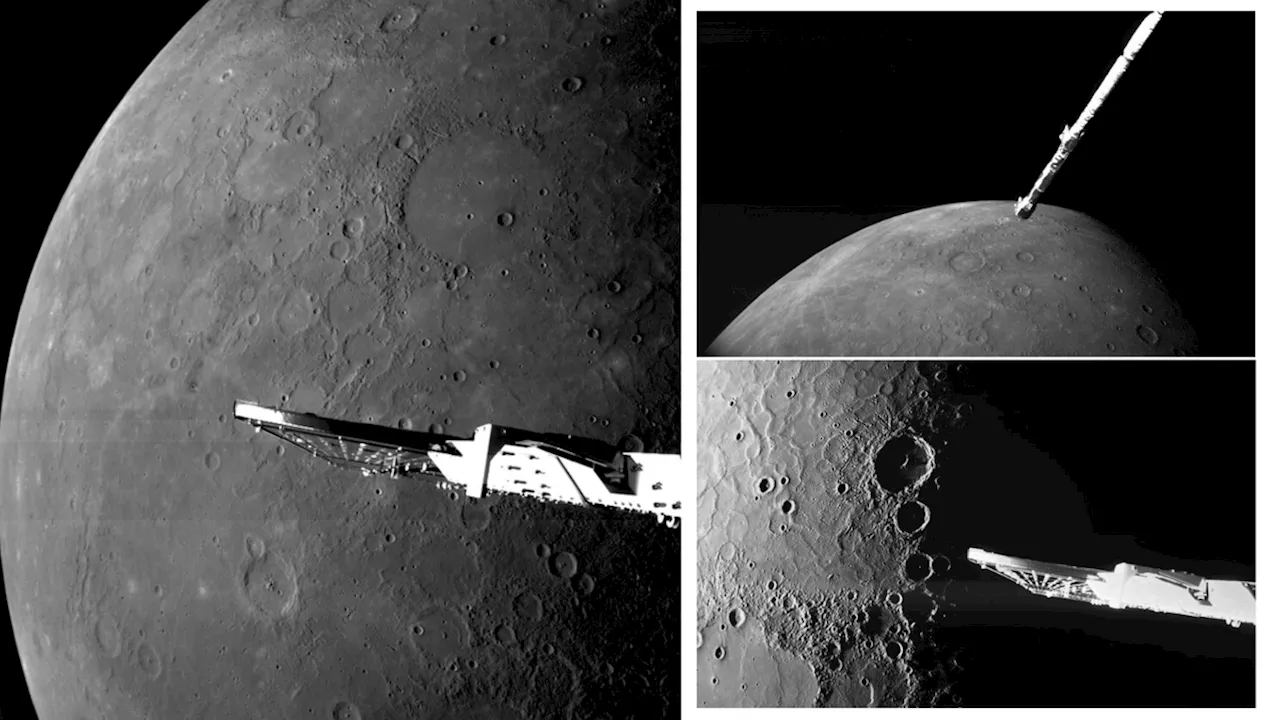 BepiColombo Captures Stunning Images of Mercury During Final FlybyThe ESA/JAXA BepiColombo spacecraft has completed its sixth and final flyby of Mercury, capturing breathtaking images of the planet's surface. These images provide valuable insights into Mercury's geology, including its craters, volcanic plains, and the potential for subsurface ice. BepiColombo is scheduled to enter orbit around Mercury in 2026, marking the beginning of its primary mission.
BepiColombo Captures Stunning Images of Mercury During Final FlybyThe ESA/JAXA BepiColombo spacecraft has completed its sixth and final flyby of Mercury, capturing breathtaking images of the planet's surface. These images provide valuable insights into Mercury's geology, including its craters, volcanic plains, and the potential for subsurface ice. BepiColombo is scheduled to enter orbit around Mercury in 2026, marking the beginning of its primary mission.
Read more »
![]() BepiColombo Captures Close-Up Images of Mercury's SurfaceThe BepiColombo mission performed its sixth flyby of Mercury, capturing stunning close-up images of the planet's surface, including its shadowed craters and the Caloris basin, the largest impact crater on Mercury.
BepiColombo Captures Close-Up Images of Mercury's SurfaceThe BepiColombo mission performed its sixth flyby of Mercury, capturing stunning close-up images of the planet's surface, including its shadowed craters and the Caloris basin, the largest impact crater on Mercury.
Read more »
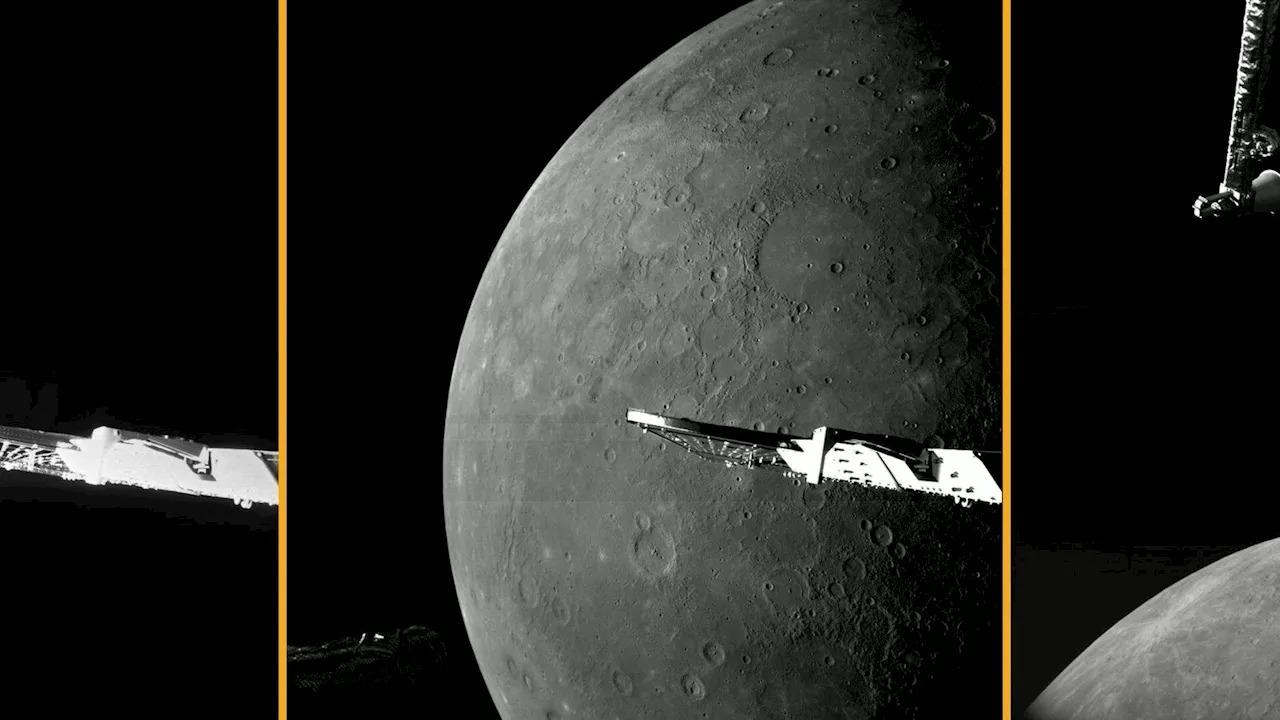 BepiColombo Captures Stunning Close-Ups of Mercury, Revealing its SecretsThe BepiColombo mission has provided breathtaking new images of Mercury, showcasing its cratered surface, volcanic plains, and potentially icy craters. These images offer scientists a closer look at this enigmatic planet.
BepiColombo Captures Stunning Close-Ups of Mercury, Revealing its SecretsThe BepiColombo mission has provided breathtaking new images of Mercury, showcasing its cratered surface, volcanic plains, and potentially icy craters. These images offer scientists a closer look at this enigmatic planet.
Read more »
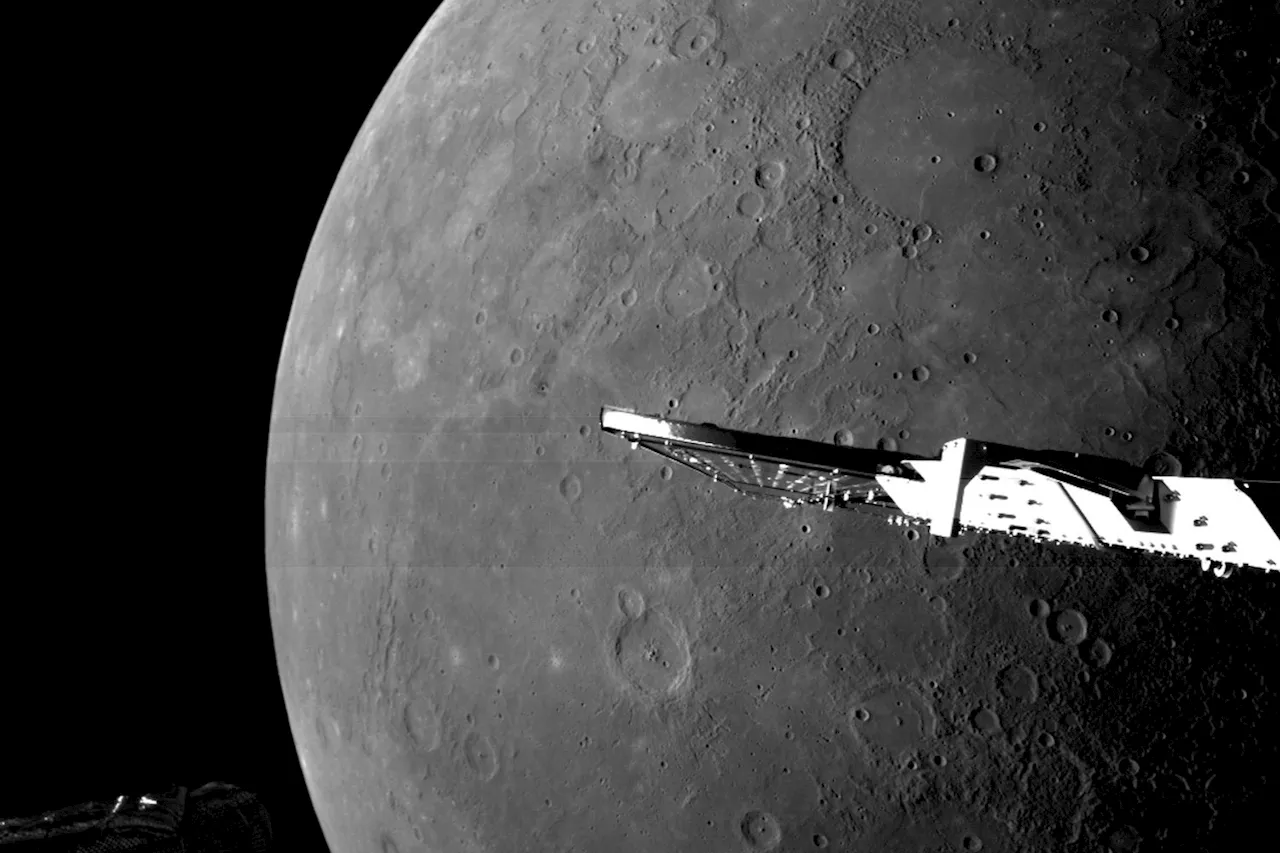 BepiColombo Captures Stunning Images of Mercury's Hidden CratersEurope and Japan's BepiColombo spacecraft flew past Mercury for the sixth and final time, capturing close-up images of its cratered surface, including permanently shadowed areas that may hold frozen water. The mission, a joint venture between ESA and JAXA, used Mercury's gravity to adjust its trajectory for eventual orbital insertion in 2026.
BepiColombo Captures Stunning Images of Mercury's Hidden CratersEurope and Japan's BepiColombo spacecraft flew past Mercury for the sixth and final time, capturing close-up images of its cratered surface, including permanently shadowed areas that may hold frozen water. The mission, a joint venture between ESA and JAXA, used Mercury's gravity to adjust its trajectory for eventual orbital insertion in 2026.
Read more »
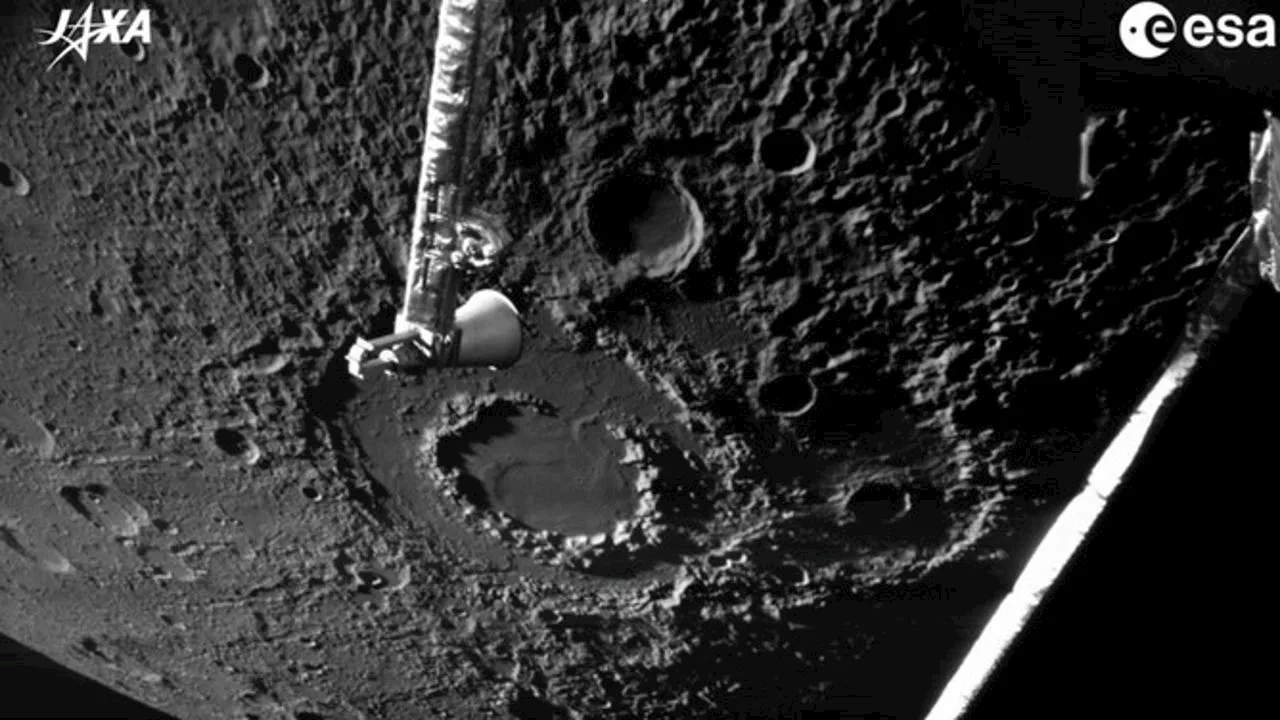 BepiColombo Makes Final Mercury Flyby, Eyes OrbitThe ESA and JAXA's BepiColombo spacecraft has completed its final flyby of Mercury, capturing images and data before entering the planet's orbit.
BepiColombo Makes Final Mercury Flyby, Eyes OrbitThe ESA and JAXA's BepiColombo spacecraft has completed its final flyby of Mercury, capturing images and data before entering the planet's orbit.
Read more »
